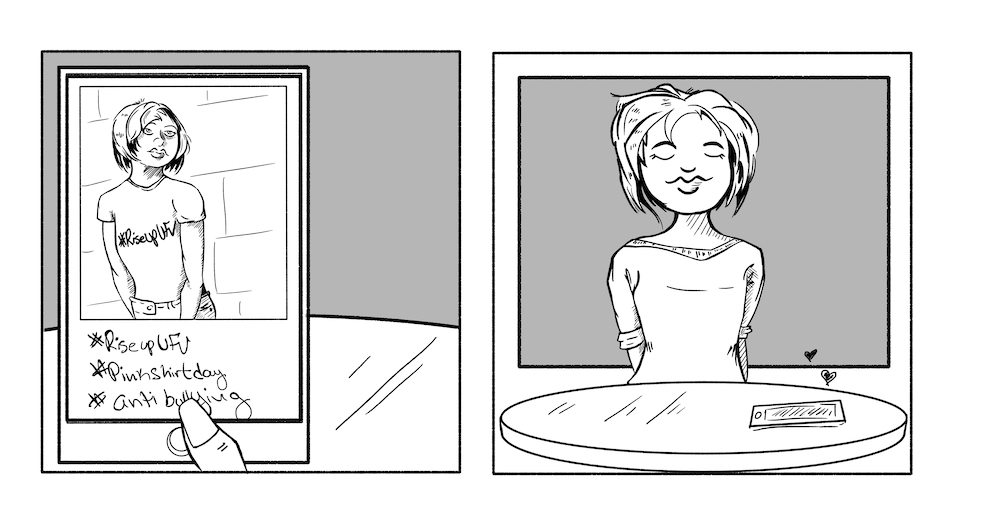On Wednesday, Feb. 27, UFV will be participating in their own version of Pink Shirt Day by selling pink shirts with the logo #RiseUpUFV throughout campus. Though they say the sale of the shirts is in order to support Pink Shirt Day, it’s unclear as to what percentage of the funds will be donated back to the Pink Shirt Day initiative.
A brief overview: Pink Shirt Day began in Nova Scotia in 2007 through a partnership between CKNW Kids’ Fund, Boys & Girls Club, and CKNW 980 in response to bullying. The initiative began with these groups collecting funds for donation for anti-bullying programs, and staff members sporting pink shirts to show their support. As of 2018, over $1.8 million has been collected and allocated to anti-bullying groups, and more than 59,000 youth have been impacted by these donations.
Pink Shirt Day’s website is a wealth of information. There are resources to help understand what constitutes bullying, support for those who have been bullied, and support for teachers and parents to create healthy environments and tips to prevent bullying. There are also links leading to fundraising, donation, and volunteer options, and, of course, a link to contact the admins if you have any questions or concerns.
As far as awareness initiatives go, Pink Shirt Day is doing a fine job. The problem is that “awareness” days — days centreing on drawing attention to a specific problem — often don’t have much impact beyond making people aware that this problem is happening. And sure, you can argue that that’s something, but what’s actually being done by the average person? Out of the thousands of people who witness some sort of awareness event happening, how many people then go do research on the problem, or analyze their own behaviour, or donate to the cause?
As humans, we have a desire to fit in. We’re hardwired to do so, thanks to our prehistoric ancestors — if you didn’t fit in with the group and were out alone, you were more likely to be eaten by some terrifying, oversized beast. And our reptile brains haven’t changed much. We still want to fit in with the crowd, and according to The Atlantic, awareness days give us that opportunity by allowing us to tweet or comment our thoughts on a specific topic that everyone else is weighing in on. We’re part of the group, and we feel like we’ve done something.
As I said, it does get people talking, and with topics like mental health and bullying where there’s often a stigma surrounding people who deal with these issues, this is a big step forward. There are conversations being had, and yes, it’s great that they’re happening. But all talk and no action never got anything done, and neither will posting a photo of you wearing a pink shirt on Instagram (as cool as it would be if it did).
Support things, but support them fully. If you believe in a cause — in this case, Pink Shirt Day — wear the pink shirt and post a photo if you like, but also analyze your own behaviour and see how you can improve, donate your time or money to the cause, or even just talk with your friends about how you can do better when it comes to bullying. When all you do is talk about a problem it leads to a dead end. There has to be action along with the conversation for a difference to be made.
Image: Eylssa English/The Cascade


